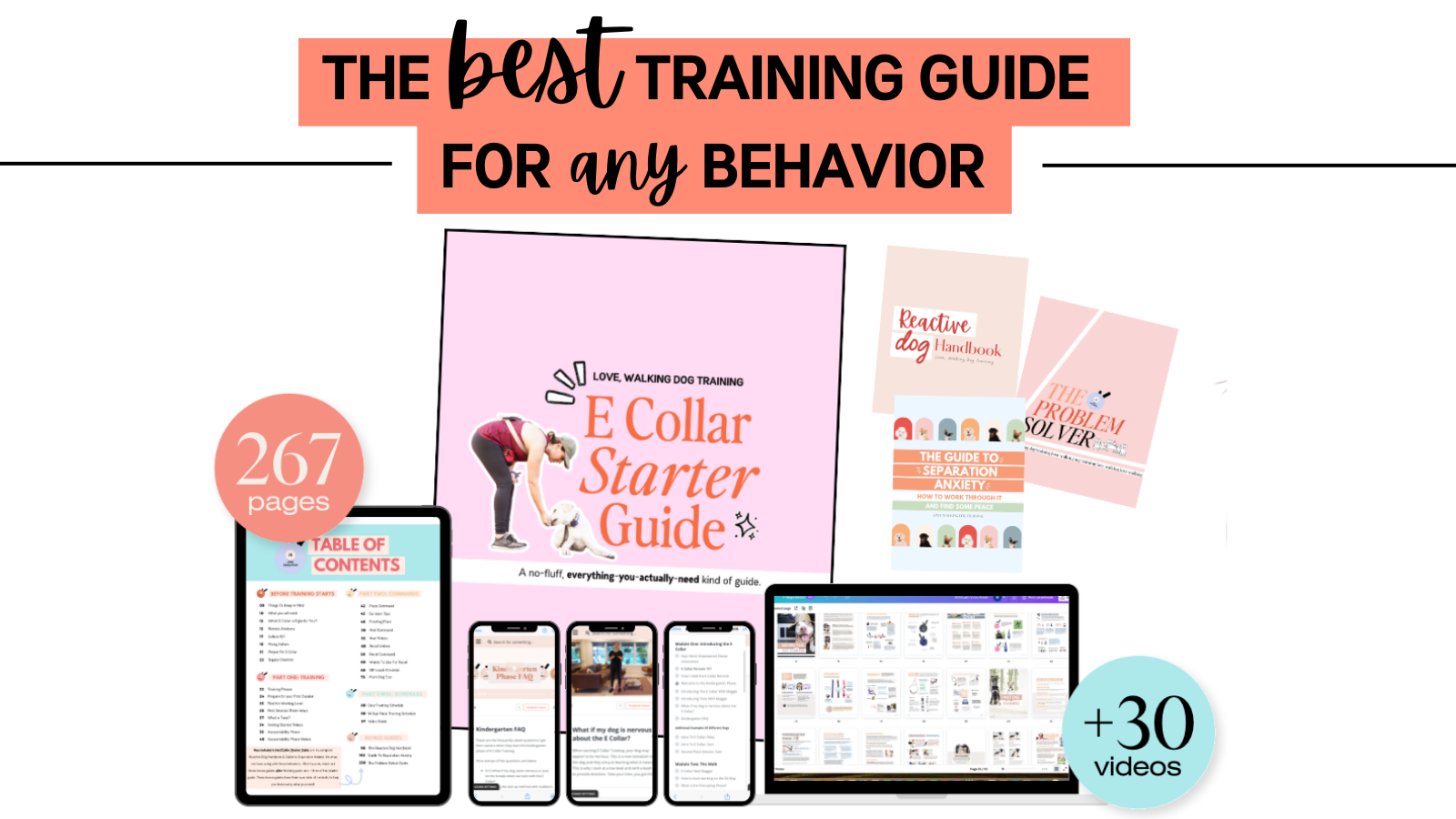Is E Collar training ok for nervous dogs?
Our dog Louie is one of the most nervous dogs I've ever worked with - just in case you thought trainers have perfect dogs. When we got her, I thought I'll never be able to "train" her. She was so fidgety and never wanted to sit still.
She'll be five this year, and I've grown a lot as a trainer thanks to her. Funny how that happens, right? Well, not funny. Kind of maddening. What would be funny is a dog that made me laugh. Back then, she led me down a rabbit hole, questioning every decision I ever made. Getting her was one of them. And the other was, can I be a dog trainer if my dog is this challenging?
So it's five years later, and I'm not laughing but smiling. And laughing - Louie is pretty funny. It's easier to feel that way when looking back on things and not in the thick of it.
I've wanted to write more about nervous dogs and why this training is so helpful, and I thought about Louie and how she's grown so much thanks to this training. I'm grateful for it, and I hope this blog helps you understand why.
Our dog Louie
This weekend, I was on the phone with a potential board and train owner. Her dog is anxious in the kennel, and she will bark and bark until about fifteen minutes in, then relax until she hears her owner move. I know I've been there. A dog finally settles in the kennel, and you're scared to breathe for fear of waking them up.
She asked the question I hear all the time.
If you use the E Collar to stop the barking, won't it make her more anxious?
Here are the reasons why it will not make your dog (or hers) more anxious.
The first step for me is introducing the E Collar before addressing the barking in the kennel - this is key. I share the whole process with you in our E Collar Starter Guide. Did you think I was going to dangle this stuff in front of you and not show you how I do it?? Not my style.
And take a look at our E Collar Video Course for a deep-dive into my process.
I like to teach the "language" of the E Collar first, which helps the dog understand this new pressure before I use it for kennel anxiety.
Once your dog understands what the E Collar pressure means and what to do with it (don't worry, it's all in the E Collar Starter Guide), you can use it to interrupt barking or whining in the kennel.
When a dog is barking in the kennel (or whining on place), having a tool that helps you interrupt it is essential to helping your dog chill. Your dog is stressed out when barking and whining and using the E Collar to interrupt it won't make things worse - quite the opposite.
Another way that E Collar training can also be helpful for a nervous dog is by providing MAJOR clarity. Our dog Louie is a perfect example, and she's extremely nervous about people. Whenever we take her somewhere busy, heel is our go-to command.
*When I refer to "training," I'm talking about the commands - aka Structure. These things help us guide our nervous dogs through situations that might make them uncomfortable.
Using the E Collar to reinforce a command (like heel) empowers me to guide her through unfamiliar places confidently. She would become more fearful if she were allowed to walk all over the place and make her own decisions (like high-tailing it out of there).
I'm not using the E Collar to correct her fear. I'm using it to reinforce commands she knows, which helps me guide her through scary moments. The more we do it, the more confident she becomes.
Let's say I'm scared of graveyards at night. I get dropped off by friends who tell me to explore. I'm scared, but I'm there, so I walk around by myself. I wish someone were there to guide me through it. I walk around, getting spooked everywhere I turn. Still, I'm not fond of graveyards. They scare me. My instincts tell me to run away and get as far as possible. So I do. I get home, jump into bed, hide under the covers, and swear never to go there again.
The other scenario is I go with a friend to the graveyard. She gets out of the car with me, and we walk around together. We lock our arms, which makes me feel safe. She is not scared of the graveyard, which calms me a bit. She tells me a story about her grandpa. He used to take her to a graveyard to visit her Nana. He told her stories of Nana Betty and how she loved to dance to old records. Her favorite thing was going for a picnic on a Saturday afternoon. Sip some wine and munch on fresh bread.
My friend told me stories and guided me through the graveyard. I wasn't as scared anymore because she was with me. Arms locked together, side by side. Instead of running away, I walked around with her. I imagined her Nana Betty lying on a picnic blanket by these tombstones, sipping her wine and dancing to a tune.
Do you see how different these scenarios are?
Using a tool like the E Collar helps us guide our dogs through scary moments. Much like my friend in the graveyard. With guidance, our dogs can become more confident.
I'm currently working on The Guide To Separation Anxiety, and there will be a section about this. How to find levels to stop the barking/whining, and how to even begin.
But for now, I recommend our E Collar Starter Guide to get started. There is a section in there all about whining on place and how I use the E Collar, and it's similar to how I use it for barking and whining in the kennel.
E Collar training can feel overwhelming, but it doesn't have to be. Check out our resources to get started. Wishing you all the best - B













